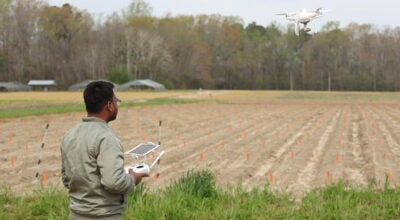Governor details reopening plan
Published 10:53 pm Friday, May 8, 2020
|
Getting your Trinity Audio player ready...
|
Gov. Ralph Northam unveiled what his phase one reopening plan would look like when it is scheduled to take effect May 15, as long as COVID-19 metrics continue in a positive direction.
Data Northam is using to inform his phased opening approach include the number of confirmed cases, which he acknowledged was rising as the number of tests increase, along with the number of people tested per day for the coronavirus and the percent of positive tests, which he noted has been trending down over the past two weeks.
He said hospitals are not being overwhelmed, as once feared, and there has been increased testing and increasing amounts of personal protective equipment for first responders and hospital workers.
“I want to reassure Virginians, we are not opening the floodgates here,” Northam said at his Friday press briefing. “We’re not flipping a light switch from closed to open. When the time is right, we will turn a dimmer switch up just a notch.
“The reality is that the virus is still in our communities, and we need to continue our vigilance and social distancing, handwashing and wearing of face protection when we’re out and about.”
Statewide, there have been 22,342 positive COVID-19 cases reported as of Friday morning, according to the Virginia Department of Health, with 812 deaths.
In the Western Tidewater Health District, there have been 466 positive cases, with 209 in Suffolk, 129 in Southampton County, 105 in Isle of Wight County and 23 in Franklin. Of the 24 deaths in the health district, 19 of those have come in Suffolk, the most of any Western Tidewater or South Hampton Roads locality.
Northam said the phase one plan would “slowly and deliberately” ease some, but not all, restrictions.
“We will move forward with science, data and safety as our criteria,” Northam said.
In Phase I, the governor said, the stay-at-home order would become a safer-at-home order. Social gatherings of more than 10 people would still not be allowed. Those at higher risk due to age or health conditions should continue to stay home, he said, and people should still practice social distancing.
Non-essential retail operations will be limited to just 10 people for two months in Phase I, with an increase of up to 50 percent of an establishment’s capacity over time. Restaurants, breweries and beverage services will continue to operate as they have now, limited to takeout, delivery or curbside service, unless a restaurant or brewery has a permit for outdoor seating, in which case it can use that space at 50 percent of its capacity.
Entertainment and public amusement venues will stay closed, while gyms and fitness centers can hold outdoor classes with limitations. Beaches will remain open for exercise and fishing only. He said a “high bar” would be in place for allowing beaches to reopen fully.
Churches will still be allowed to hold drive-in services, and services can be held inside at 50-percent capacity. Barbers and hair salons will be allowed to reopen by appointment only if people wear masks and follow strict social distancing.
Private campgrounds can also open with restrictions on distance between campsites. At state parks, which have been open for day use only, tent camping and RV camping will be allowed, with a 10-person limit still in effect. Cabins will not be in use until later, Northam said.
Some child care centers have been open for children of working families, something that will continue in the first phase, while overnight summer camps will also stay closed.
Decisions on whether to enter the different phases of the plan, Northam said, would be guided by health metrics. Localities will have the option of keeping stricter guidelines, with Northam calling his plan “a floor, not a ceiling.”
“When we enter Phase I, we expect it will last a minimum of two weeks,” Northam said. “And it may last longer, depending on what the data shows.”






